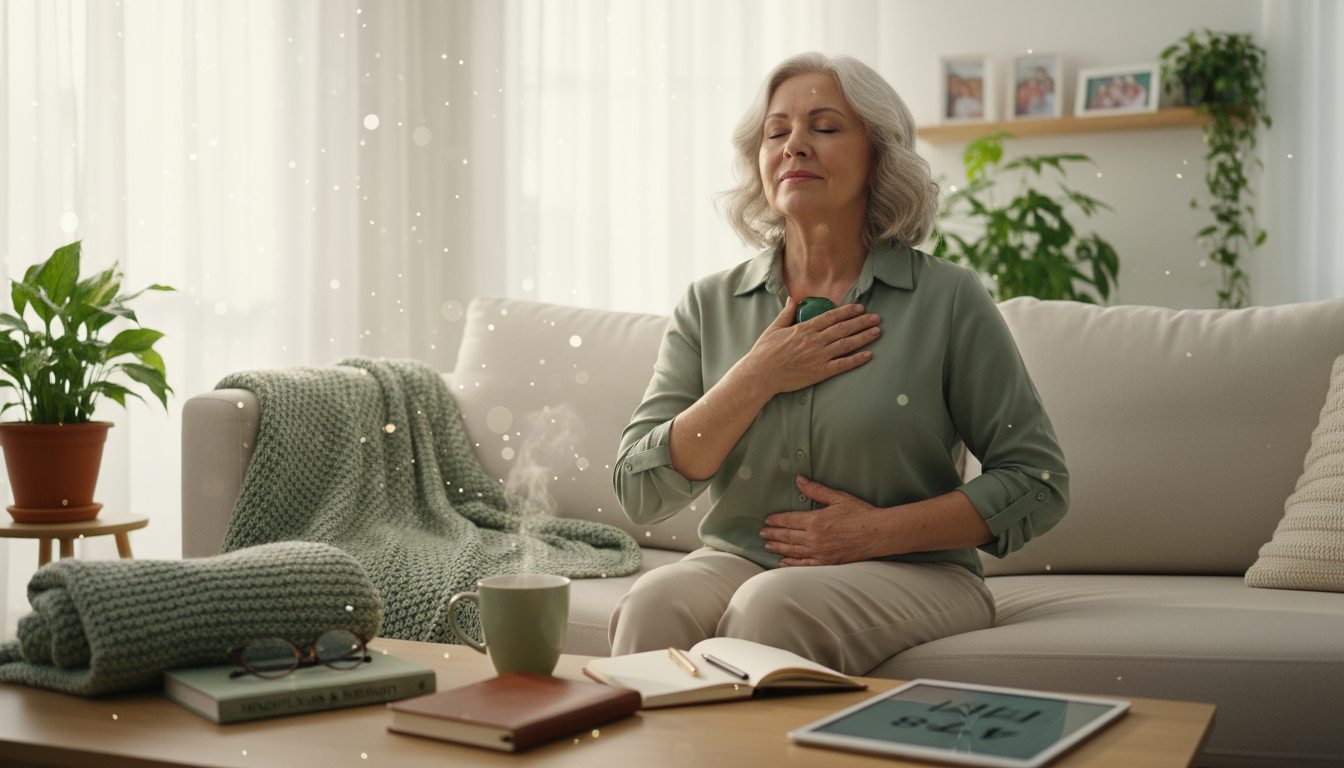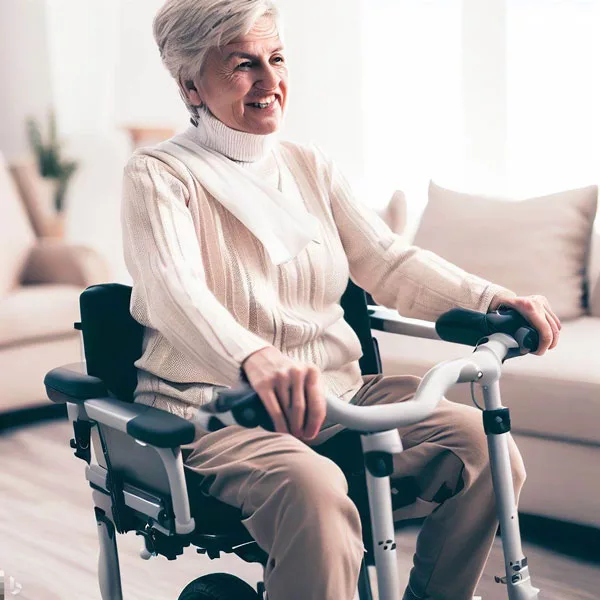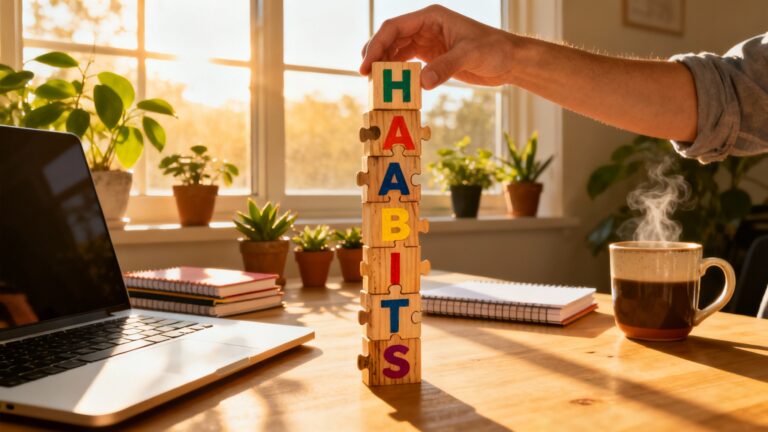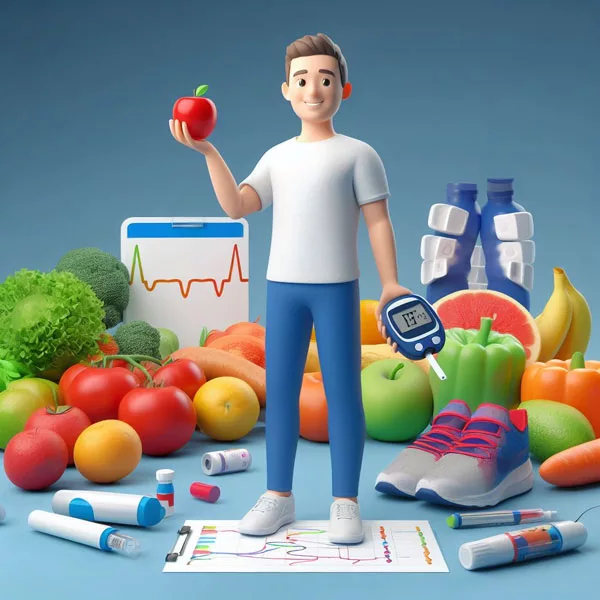How Do You Cope with Anxiety: A Complete Guide to Managing Your Worries
How do you cope with anxiety? Dive into some practical daily habits, and when to get help—explained like advice from a calm friend.
Key Takeaways
- Anxiety affects millions, but the right tools make a real difference in daily life
- Breathing and grounding can calm anxiety symptoms in the moment
- Long-term strategies—exercise, mindfulness, therapy—create lasting stability
- Your support system and steady habits are a big part of mental health
- Knowing when to seek mental health professional help is a strength, not a setback
If you’ve ever felt your heart doing the cha-cha during a presentation, hosted a 3 AM worry-festival, or discovered your stomach can tie itself into a pretzel before big moments, welcome. Learning how do you cope with anxiety isn’t about becoming a Zen master overnight; it’s about gathering a handful of small, reliable tools so your nervous system doesn’t run the whole show. I’ve had to learn this too—my 3 AM brain loves a good plot twist.
Population check: an estimated 40 million adults in the U.S. cope with anxiety disorders every year. That’s a lot of us quietly doing box-breathing in grocery lines. Whether you’re dealing with occasional stress or a diagnosable disorder, this guide offers practical, evidence-backed ways to feel steadier, kinder to yourself, and more in charge of your day.
You’ll get quick relief options for flare-ups, long-term habits that lower your baseline, and clear signs it’s time to loop in a professional. Think: doable steps, less drama, more calm.
Anxiety Symptoms: Understanding What You’re Dealing With

Before we dive into how to manage anxiety disorders, let’s peek under the hood. Picture your brain’s threat system as a home security alarm with a hair trigger. A surprising email? Sirens. New social situation? Floodlights. Neighbor’s cat? DEFCON 2.
A little anxious feeling is functional—it keeps you alert, nudges you to prep, helps you double-check locks. The trouble starts when ordinary moments get treated like emergencies. That’s when we shift from typical worry into anxiety disorder territory.
Generalized anxiety disorder (GAD) is the “always-on” version—excessive worry across many areas for months at a time. Panic disorder brings sudden, intense spikes (racing heart, chest tightness, “oh no” lightning) that feel terrifying in the moment.
Symptoms of anxiety show up in body and mind: muscle tension, rapid heartbeat, sweaty palms, fatigue, restlessness—plus racing thoughts, fuzzy focus, and those “worry loops” that replay like a catchy song you didn’t ask for.
Good news, though: brains can change. With practice, you can retrain your threat system to stop pulling the fire alarm every time the toaster pops. I’ve felt this shift myself—it’s not magic, just reps.
Immediate Relief: What to Do When Anxiety Strikes
When anxiety hits, you don’t want a lecture—you want relief. These moves aren’t cure-alls, but they reliably lower the volume. Pro tip: practice when calm so your body recognizes the pattern when you need it.
Breathing Techniques That Actually Work When You Feel Anxious
Your breath is a built-in reset and proactive solution to manage stress. Anxiety shortens and speeds breathing, which tells your brain “keep the sirens going.” Slow it down, lengthen the exhale, and your body gets the memo: we’re safe.
Try 4–7–8 breathing as relaxation techniques: inhale through your nose for 4, hold for 7, exhale through your mouth for 8. The long exhale is the hero—it nudges the parasympathetic (rest-and-digest) system via the vagus nerve. Do 3–4 rounds. If you get lightheaded, shorten the counts and build up.
In public, when you feel anxious, go with box breathing: inhale 4, hold 4, exhale 4, hold 4. Trace a mental square. It’s quiet, quick, and used by people who handle real pressure. I’ve done this in elevator rides that felt three floors too long.
Why it works to people with anxiety disorders: longer exhales help release calming neurotransmitters (like GABA) and dial down stress chemistry. It’s physiology—simple and powerful.
Common pitfall: turning breathing into a try-hard moment. Keep it gentle and repeatable, not a competition.
Grounding Techniques for People with Anxiety Disorders (Present-Moment Calm)
Anxiety drags attention to what-ifs and replays. Grounding brings you back to now.
Try 5–4–3–2–1: name 5 things you see, 4 you can touch, 3 you hear, 2 you smell, 1 you taste. Concrete data for your brain beats abstract worries.
Physical grounding works fast: hold ice, press your heels into the floor, run your fingers across a textured surface. I keep a smooth stone in my pocket. It’s tiny, unglamorous, and wildly effective.
Mental grounding: count backward from 100 by 7s, spot five blue items in the room, or quietly sing a chorus you know by heart. Just enough focus to break the spin.
Bonus: these are portable. Bus stops, break rooms, bathrooms—anxiety doesn’t get to pick the location.
Building Your Long-Term Anxiety Management Toolkit
Quick tricks help in a pinch. Long-term steadiness comes from small habits layered over time—compound interest for calm.
Exercise: Your Built-In Anti-Anxiety Tool
Movement changes brain chemistry: more endorphins, better GABA signaling, lower stress hormones. Translation: your body remembers how to settle.
Aim for 150 minutes of moderate activity a week (or 75 vigorous). But honestly, ten minutes counts. Cardio (walks, cycling, dancing) can boost mood fast. Strength training builds grounded confidence. Yoga pairs breath, presence, and motion.
Hate gyms? That’s fine. Try neighborhood loops, YouTube workouts, or a “walk and vent” with a friend. On heavy days, I stretch for two minutes and say “win.” Because it is.
Anxiety Relief: Mindfulness and Meditation That Fit Real Life
Mindfulness = noticing without spiraling. Meditation = practice time. You don’t need robes or a mountain.
Start with 5–10 minutes. Use an app (Headspace, Calm, Insight Timer) or set a timer and sit how you like. Your mind will wander—that’s not failure, that’s the rep. Notice, return, repeat.
If you like receipts: a 2022 JAMA Psychiatry randomized trial found Mindfulness-Based Stress Reduction performed as well as escitalopram (an SSRI) for anxiety disorders. That’s a solid option with no side effects.
Micro-mindfulness counts: actually taste lunch, feel your feet when walking, notice three sounds while waiting in line. I keep a tiny reminder on my phone that just says “look up.” Corny? Yep. Helpful? Also yep.
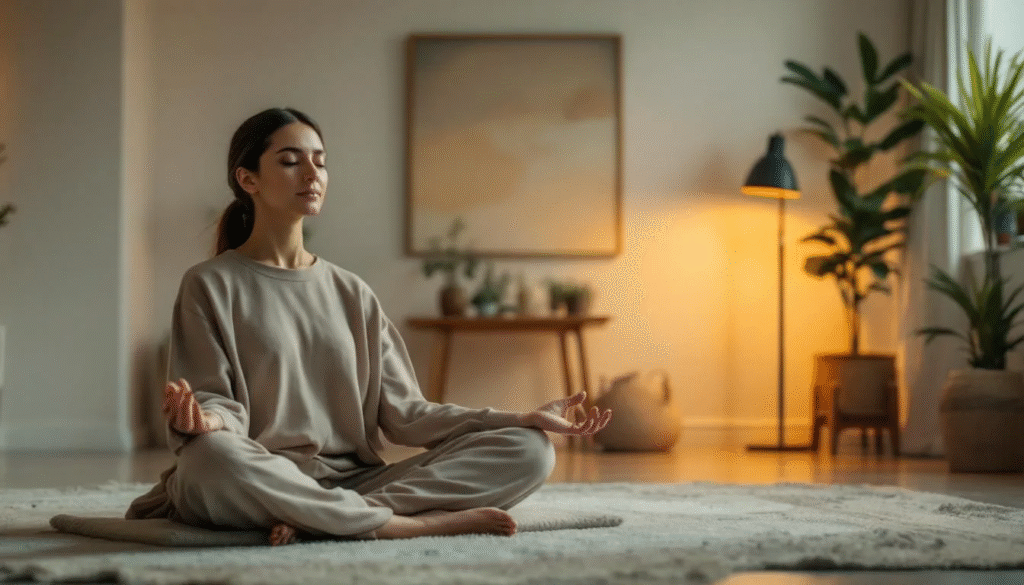
Mental Health: Rewiring Your Thought Patterns
Here’s a power move when you experience symptoms of anxiety: thoughts aren’t facts. They’re weather. You can notice them, check the forecast, and decide whether to pack an umbrella.
Cognitive-behavioral therapy (CBT) helps you spot thinking traps and swap them for truer, kinder thoughts. You can start solo; a therapist can speed it up.
Identifying and Challenging Anxious Thoughts and Other Symptoms
Anxiety’s greatest hits: catastrophizing (worst-case is guaranteed), all-or-nothing thinking (perfect or trash), and mind reading (“they definitely think I’m a mess”).
When you feel the surge, ask: what did I just think? Write it down if you can—seeing it shrinks the “truth” factor.
Then get curious:
- What’s the evidence for and against this thought?
- What would I tell a friend who believed it?
- Realistically, what are the odds?
- If the worst happened, what’s my plan?
Try a daily “worry window” (15 minutes). When worries pop up at random, jot them down and save them for later. Weirdly often, I forgot to “worry” about them when the window arrived.
Building a Kinder Inner Voice During A Panic Attack
Harsh self-talk doesn’t prevent mistakes; it just adds fear. Self-compassion lowers anxiety and helps you try again tomorrow.
Use believable lines: not “I never get nervous,” but “I can do hard things even when I’m nervous,” or “Anxiety is uncomfortable, not dangerous.”
Catch the soundtrack: “I always mess up,” “Everyone thinks I’m weird,” “I can’t handle this.” Ask: Is this helpful? Is it accurate? What’s a more balanced version? With practice, your inner narrator softens.

Creating Your Support Network
Anxiety wants you isolated. Connection pokes holes in it. This isn’t about making friends with your therapists; it’s about safe people who know the real you.
Social support consistently buffers stress and improves outcomes for folks learning how to deal with excessive anxiety. Think of support as a menu: practical help, quiet listening, or a friend who drags you to a park and talks about anything else.
Talking to Friends and Family
Choose your people as your support groups: steady, kind, no “just think positive!” speeches. Share simply: “I’ve been dealing with anxiety; crowds can feel overwhelming. If I get quiet, that’s why. I’m working on it.”
Ask for what helps relieve anxiety: “Can we arrive early so it’s not packed?” or “Today I just need you to listen.” Boundaries make support sustainable—for both of you.
Peer groups help too (local NAMI chapters or credible online communities). Hearing “me too” from the right crowd is medicine.
Professional Support Options
Self-help is powerful; professional help can be a multiplier—especially if anxiety is shrinking your life.
CBT has a deep evidence base. Exposure therapy (a CBT approach) helps your brain unlearn fear by safely, gradually facing it. DBT teaches emotion regulation and distress tolerance. ACT helps you make space for discomfort while moving toward what matters.
Finding a therapist: check insurance, ask your primary care provider for referrals, and use reputable directories to filter by specialty. Fit matters more than fancy bios. If it’s not a match, keep looking. You’re hiring a teammate.
Medication can help: SSRIs, SNRIs, sometimes beta-blockers. A psychiatrist (or informed primary care clinician) can guide you. Skills + meds often wins for moderate to severe anxiety.
Online therapy is valid and convenient—and eliminates the parking lot pep talk.
Daily Habits and Coping Strategies That Quiet Feeling of Anxiety
Tiny, boring choices are sneaky-powerful. They lower your baseline and make spikes less… spiky.
Sleep and Anxiety: Break the Loop
Why do you need enough sleep? Poor sleep raises next-day anxiety; anxiety ruins sleep. In a 2019 Journal of Neuroscience study (Ben Simon & Walker), even one rough night increased next-day anxiety by up to 30%.
Build a gentle wind-down: dim lights 60–90 minutes before bed, skip blue-light screens, try light stretching or a warm shower, then a few rounds of 4–7–8. Make your bedroom cool, dark, quiet. If you’re awake ~20 minutes, get up and do something low-stimulus until you’re sleepy. Turn the clock around; the minute math spiral never helps.
Caffeine: Quit drinking caffeinated beverages. Set a cutoff (2 PM is common). Alcohol can knock you out but fragments sleep and spikes 2 AM anxiety. Hydrate, but maybe not a full bottle at bedtime unless you enjoy night hikes.
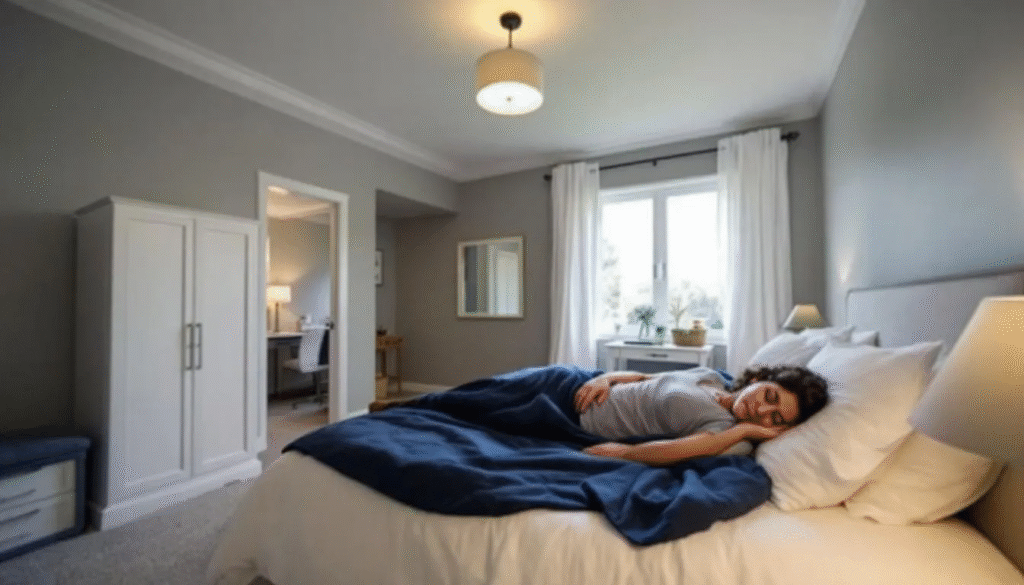
Healthy Diet: Nutrition and Lifestyle That Support Calm
Food won’t cure anxiety, but stable blood sugar helps your body feel safe. Anchor meals with protein, fiber, and healthy fats; avoid big sugar swings.
If caffeine makes your heart hum like a tuned engine, taper. Swap a cup for green tea (lower caffeine + L‑theanine’s calm nudge). Alcohol? Think “sometimes” and “mindfully,” not nightly numbing.
Helpful nutrients: omega‑3s (fatty fish, walnuts, flax), magnesium (leafy greens, beans, nuts), fermented foods for gut-brain harmony. Water matters too—dehydration can look suspiciously like anxiety.
Routines soothe the nervous system. Not rigid rules—friendly consistency: similar wake time, familiar mealtimes, and a small bedtime ritual.
Recognizing When You Need More Help
Sometimes the strongest move is calling in backup. That isn’t failure; it’s wisdom. Call your mental health provider when you know the symptoms are beginning to spin out of control before it’s too late.
Red Flags for Professional Support
- Intense anxiety derails work, relationships, or basic self-care
- Persistent physical symptoms (chest pain, severe headaches, chronic GI issues)
- Frequent or escalating panic attacks
- Leaning on substances to cope
- Thoughts of self-harm or suicide—this is an emergency; seek immediate help (dial 988 in the U.S.)
- Avoidance is shrinking your life (skipping people/places you used to enjoy)
For a first appointment, jot down how anxiety shows up, possible triggers, and what you’ve tried. It helps build a plan that actually fits your life.
Frequently Asked Questions
Can anxiety go away completely?
Sometimes, yes. Often, it becomes highly manageable—like background noise you can turn down. With the right mix (skills, habits, sometimes meds), many people live full lives where anxiety isn’t steering.
How long until I feel better?
Breathing and grounding can help today. Baseline shifts often show within 2–4 weeks of regular practice (movement, sleep, mindfulness). Many therapies show gains in 6–12 sessions. Progress zigzags—zoom out.
Normal worry vs. anxiety disorder?
Normal worry is proportional and temporary. An anxiety disorder is excessive, persistent, hard to control, and it interferes with life. Butterflies before an interview? Normal. Weeks of dread and avoidance? Time to get help.
Do supplements help?
Some have evidence: magnesium, omega‑3s, L‑theanine; herbs like chamomile or passionflower show promise. They can interact with meds—loop in your healthcare provider before starting anything.
How do I support someone with anxiety?
Listen more than you fix. Ask what would help today. Learn the basics so their experience makes sense. Encourage professional help for severe symptoms—without pressure. Keep your own boundaries so support is sustainable.
Final Thoughts: One Kind Step at a Time
Learning how do you cope with anxiety isn’t about becoming a different person—it’s about finding a steadier rhythm. You don’t need perfect habits or a cabin in the woods (though if you have one, I make great s’mores). You need a few reliable tools for hard minutes, daily choices that lower your baseline, people you can lean on, and the courage to ask for help when you need it.
Try one tiny thing today: two rounds of box breathing, a 10‑minute walk, or writing down one worry instead of chasing it. That’s how you cope with anxiety—one small, kind action at a time. And if your inner critic pipes up? Smile and say, “Thanks, but I’m on my own team today.”

